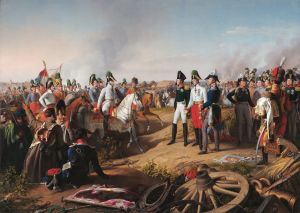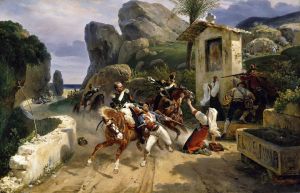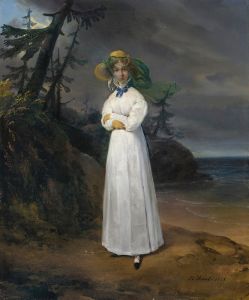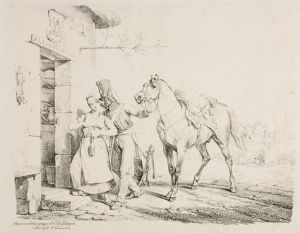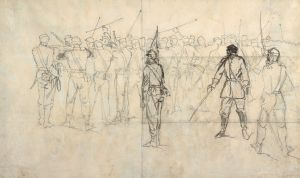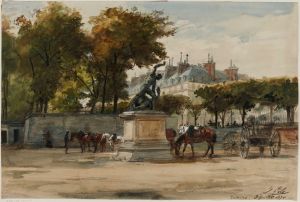
The Battle of Friedland, June 14,1807
A hand-painted replica of Horace Vernet’s masterpiece The Battle of Friedland, June 14,1807, meticulously crafted by professional artists to capture the true essence of the original. Each piece is created with museum-quality canvas and rare mineral pigments, carefully painted by experienced artists with delicate brushstrokes and rich, layered colors to perfectly recreate the texture of the original artwork. Unlike machine-printed reproductions, this hand-painted version brings the painting to life, infused with the artist’s emotions and skill in every stroke. Whether for personal collection or home decoration, it instantly elevates the artistic atmosphere of any space.
"The Battle of Friedland, June 14, 1807" is a painting by the French artist Horace Vernet. This artwork depicts the Battle of Friedland, a significant military engagement during the Napoleonic Wars. The battle took place on June 14, 1807, near the town of Friedland in East Prussia, which is now part of modern-day Russia. It was a decisive victory for the French forces under Emperor Napoleon I against the Russian army commanded by General Levin August von Bennigsen.
Horace Vernet, born in 1789, was a prominent French painter known for his military subjects and historical scenes. He came from a family of artists; his father, Carle Vernet, and his grandfather, Claude Joseph Vernet, were also notable painters. Horace Vernet's works are characterized by their attention to detail and dynamic compositions, capturing the drama and intensity of the events he portrayed.
In "The Battle of Friedland, June 14, 1807," Vernet illustrates a critical moment of the battle. The painting showcases the chaos and ferocity of the conflict, with soldiers engaged in combat, smoke billowing from cannon fire, and the wounded and dead scattered across the battlefield. The central figure in the painting is likely Napoleon himself, depicted commanding his troops and orchestrating the movements that would lead to the French victory.
The Battle of Friedland was a turning point in the War of the Fourth Coalition, which pitted Napoleon's French Empire against a coalition of European powers including Russia, Prussia, and Great Britain. The French victory at Friedland forced Tsar Alexander I of Russia to seek peace, leading to the signing of the Treaties of Tilsit in July 1807. These treaties resulted in significant territorial and political changes in Europe, consolidating Napoleon's power and reshaping the continent's political landscape.
Vernet's painting not only captures the historical significance of the Battle of Friedland but also reflects the broader themes of heroism, sacrifice, and the brutal realities of war. His meticulous attention to detail and ability to convey the emotional intensity of the scene make this painting a valuable historical document as well as a work of art.
"The Battle of Friedland, June 14, 1807" is part of Vernet's extensive body of work that includes numerous depictions of Napoleonic battles and other historical events. His paintings were highly regarded during his lifetime, and he received several prestigious commissions, including works for the French government and royal patrons. Today, Vernet's paintings are held in various museums and collections around the world, where they continue to be appreciated for their artistic and historical significance.
In summary, Horace Vernet's "The Battle of Friedland, June 14, 1807" is a powerful representation of a pivotal moment in European history. Through his detailed and dynamic portrayal of the battle, Vernet provides viewers with a vivid glimpse into the past, capturing both the heroism and the horrors of war.






